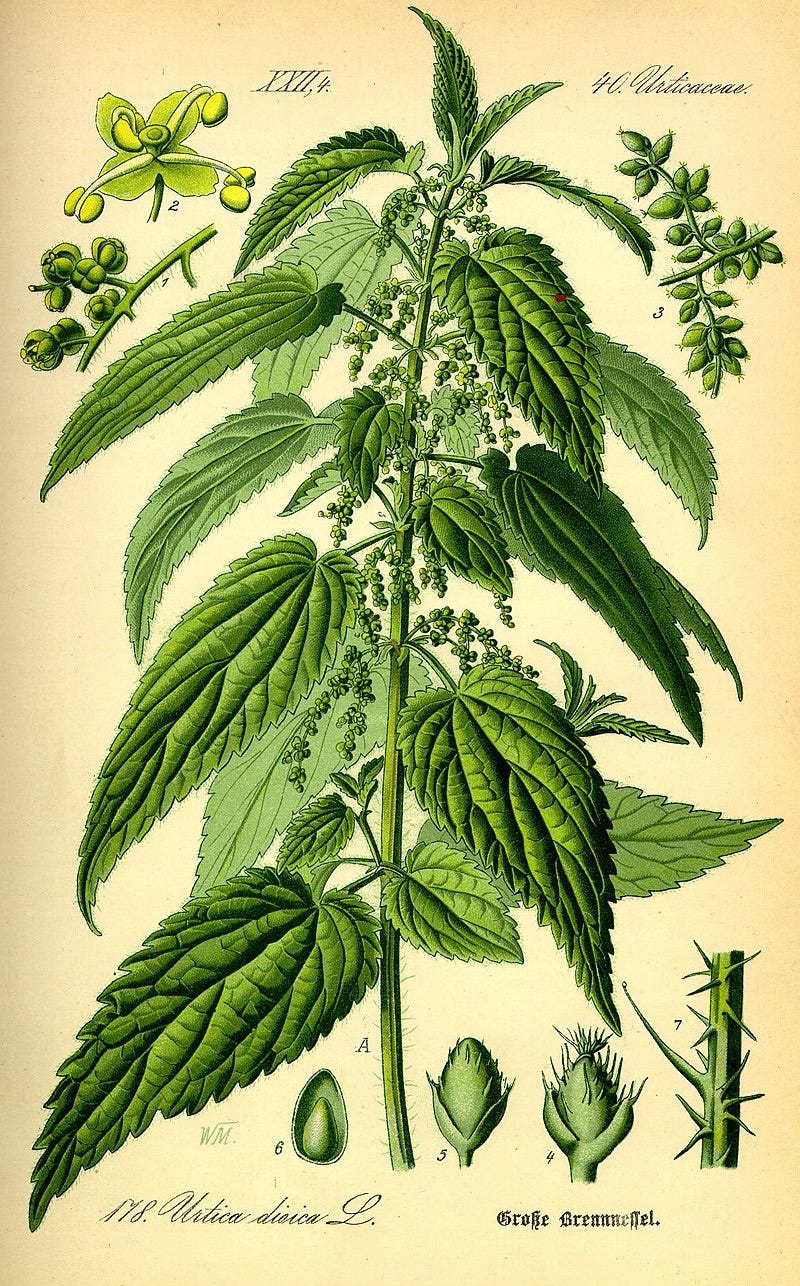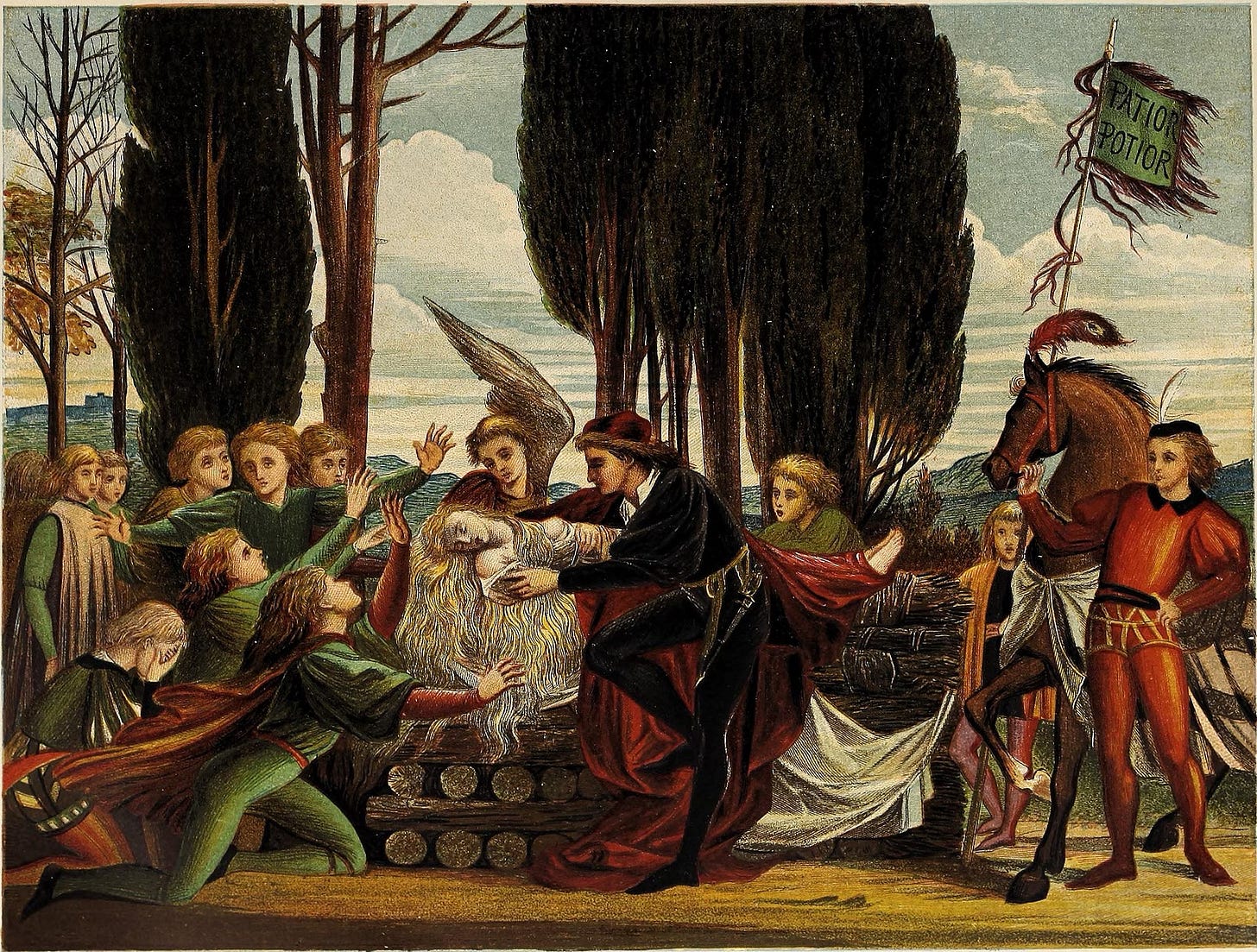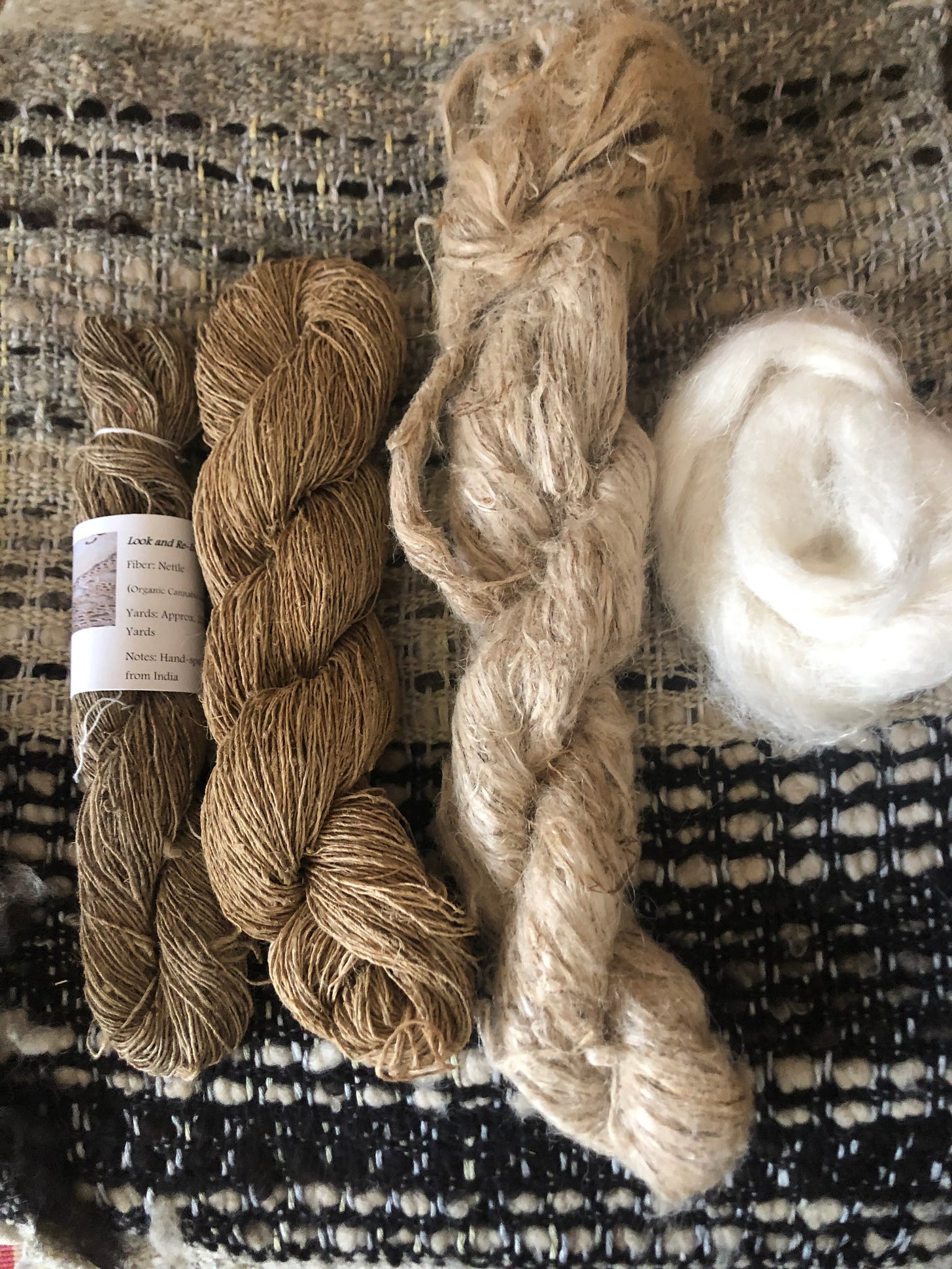Under the spell of The Nettle Dress,1 a beautiful documentary film, I have been reading up on one of our oldest fiber friends: Stinging Nettle. Early in human history, someone discovered the flexible and useful fibers hidden behind the painful stings of the prolific nettle plant. The few examples of string or thread that have come to us from the Paleolithic (and earlier) eras are plant fibers- tree bark, nettle, vines.
The use of nettle for fabric is found worldwide, and steeped in tradition. Most indigenous spinners let time and weather start the process for them, gathering the dried (and sting-free) stalks from the ground in mid-winter. Folks in a hurry for thread, can rett the stems in water, like flax, and then handle the fibers with no stings.
Fairy Tales and Fiber Arts
If you have read Hans Christian Andersen Fairy Tales, you will be familiar with The Wild Swans. Like so many of his stories, the heroine suffers great trials, but wins in the end. I must point out here, that it is clear that the author has only a vague idea of how many domestic tasks work and this story is no exception.
The princess, Elisa, has eleven2 brothers who have been enchanted by their evil stepmother. The young men have been turned into swans (who wear crowns) in the daylight and can only return to their true forms at night. Elisa is told by the Fata Morgana3 (yes, that one) that to cure them, she must collect fresh nettle to make a shirt for each brother. She can gather nettles only from the mountain and from the graveyards. And, she cannot speak until the last shirt is made.
Even as she is being taken to the stake where she is to be burned as a witch, she is still spinning and making the shirts.4 Mr Andersen does not tell us how she accomplishes the weaving part, because there is no mention of a loom. Nevertheless, she completes the exhausting task in the nick of time, freeing her brothers from the curse and herself from judgement. She does not finish the sleeve of one shirt, so her youngest brother is left with a wing. In some versions, Morgana fixes this problem with a magic spell.
Why did the fairy tell her to use Stinging Nettle? In Andersen’s time, most of Europe had shifted from nettle (foraged fibers processed at home) to large fields of flax, grown and processed by local folks (peasants) for the benefit of the landowner. Textile production was moving toward commercial, industrial production. The knowledge related to gathering and processing nettle did not completely disappear, but instead became associated with poverty and those who were living outside of society. I expect there was also a sentimental memory of nettle fabric linked to fairy tales and old women.5
The Fairy insists that Princess Eliza accept the pain caused by working with fresh nettles to make the magic work, which she does out of love for her brothers. It is not necessary to endure the stings to extract the fibers, once the plants are collected and retted (a long process) the stings lose their power. In fact, retted nettle produces softer fibers. So, The Fairy was testing the princess, but why? Was her perseverance though the pain the key to the spell working?
MAGIC FROM THE WOODS
Stinging Nettle’s association with magic has developed over the centuries. The leaves are extremely healing and nutritious and the plants can grow in boggy places where other practical crops cannot grow. They thrive where other plants cannot.
Anything that looks so innocent but delivers such a mind-bending sting, has to be magical. I have vivid memories of early encounters with Texas Bull Nettle (which is unrelated to Stinging Nettles but has the same effect on human skin).
NETTLE AS A METAPHOR FOR REVOLUTION
The following passage from Les Misérables on the utilization of Nettles, shows how conversant Victor Hugo was with the virtues of this commonly despised 'weed':
'One day he (Monsieur Madeleine) saw some peasants busy plucking out Nettles; he looked at the heap of plants uprooted and already withered, and said - "They are dead. Yet it would be well if people knew how to make use of them. When the nettle is young, its leaf forms an excellent vegetable; when it matures, it has filaments and fibres like hemp and flax. Nettle fabric is as good as canvas. Chopped, the nettle is good for poultry; pounded it is good for cattle. The seed of the nettle mingled with fodder imparts a gloss to the coats of animals; its root mixed with salt produces a beautiful yellow colour. It is besides excellent hay and can be cut twice. And what does the nettle require? Little earth, no attention, no cultivation. Only the seed falls as it ripens, and is difficult to gather. That is all. With a little trouble, the nettle would be useful; it is neglected, and becomes harmful." '
Quoted in A MODERN HERBAL by Mrs. M. Grieves
Nettle seems to be have a resurgence in the Textile Universe, persevering as a gift from the earth to us. There are many textile artists working with Stinging Nettle. I will be excited to see where this humble, sustainable, versatile fiber takes us!
A group of folks gathered at Oil and Cotton, on Sunday November 24th, for a screening of The Nettle Dress. It is a sweet and challenging story! The evening was sponsored by Melanie Sanford of Conserving Threads, Kate Stuart of Texas Fibershed, and me!
Depending on which version you read, she will have 6, 7 or 11 brothers. A lot of shirts to make!
Absolutely fascinating rabbit hole here. Where HCA lacks skill in describing normal daily work, he is a master of weaving scientific observations into his work. The original version of the story includes a dreamy mirage seen by Elisa and her brothers as they fly over the southern sea. What they see is related to an actual phenomenon of shape-shifting mirages. Historically these mirages have been associated with the lost island where Fata Morgan (Morgana le Fay) lives. It is her magic, and Elisa’s hard work, that saves the young folks.
I have a vague memory of an illustration with Eliza holding knitting needles, which would be more practical. A little nettle would go a long way in a knitted garment, but could it be called a shirt?
Even more Nettle history, a post which focuses quite a bit on North American Nettle traditions. And, here, too, are some good facts: Plant database Stinging Nettle. Also, from a scholarly collaboration by Kinunen, Martz, and Rantala.






